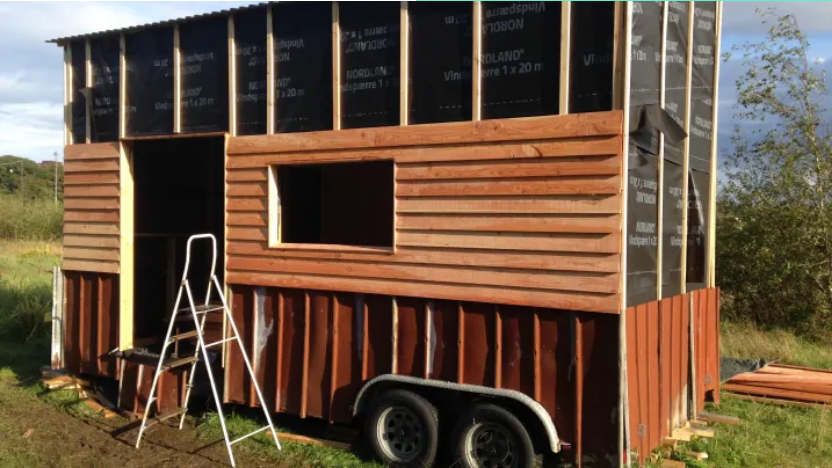36-year-old Anders Boisen used to live in apartments all over the city of Aarhus in Denmark. “I had this claustrophobic feeling about living in an apartment, not so much because of the size of it but more because of the lifestyle that seems so predefined,” he says. “If I could build a house that is off the grid and in sync with nature, then maybe I could learn how to get a better sense of life on a philosophical level.”
 So, in the spring of 2020, Boisen finished his tiny home after working on it on and off for eight months. He did most of the building himself and estimates he spent about $12,000 on the project. The tiny house is 21.3 feet long by 6.6 feet wide.
So, in the spring of 2020, Boisen finished his tiny home after working on it on and off for eight months. He did most of the building himself and estimates he spent about $12,000 on the project. The tiny house is 21.3 feet long by 6.6 feet wide.
 “I realized how personalized this home already was because I had built most of it on my own, so it was filled with my own memories and personal decisions,” he says. “But it also had the memories of all the people who came and helped out. It was qualitatively very different from what I imagine, having a contractor build a house for you.”
“I realized how personalized this home already was because I had built most of it on my own, so it was filled with my own memories and personal decisions,” he says. “But it also had the memories of all the people who came and helped out. It was qualitatively very different from what I imagine, having a contractor build a house for you.”
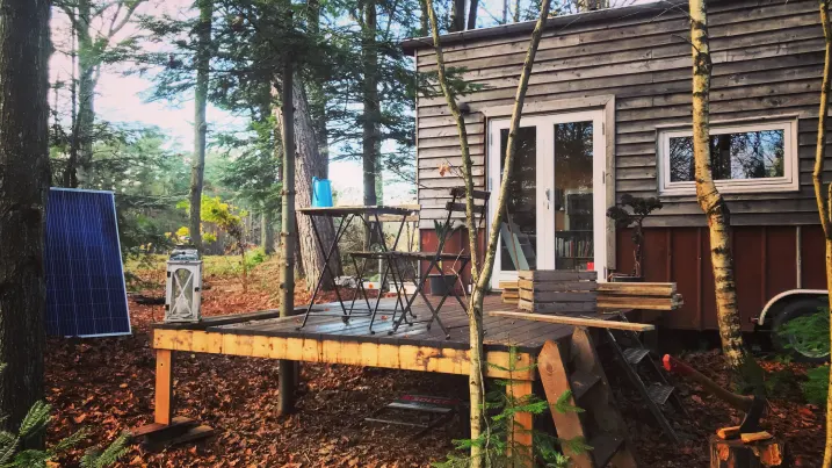 “When I moved the house, it ended up tilted to one side, and it was hard to correct it later on,” Boisen says.“It was a setback and I was kind of bummed out. In my dreams I dreamt about burning the house down because then I would get rid of the problem. But, of course, I didn’t do it but it was very stressful,” he adds laughing. Despite those challenges, Boisen says there is no greater feeling than seeing the tiny home he built be finished.
“When I moved the house, it ended up tilted to one side, and it was hard to correct it later on,” Boisen says.“It was a setback and I was kind of bummed out. In my dreams I dreamt about burning the house down because then I would get rid of the problem. But, of course, I didn’t do it but it was very stressful,” he adds laughing. Despite those challenges, Boisen says there is no greater feeling than seeing the tiny home he built be finished.
Boisen bought a plot of land outside of Aarhus. “It’s at the end of a dirt road and it doesn’t have immediate neighbors. It also has a meadow and a big forest adjacent to it so it feels a lot bigger than it really is,” Boisen says. A month later, Boisen had the tiny home moved from the property he was renting to the land he now owns.
 Boisen made sure his tiny home was equipped for life off the grid, which he defines as “self-sufficient with water, electricity, and heat.” The house has a rainwater filtration system, solar panels, and batteries to store energy. Boisen has lived in the tiny home for over four years now and says he’s run out of power several times and water just once. Now he keeps a close eye on his water tank, takes short baths if his tank is starting to run low, and aims to save water in other ways.
Boisen made sure his tiny home was equipped for life off the grid, which he defines as “self-sufficient with water, electricity, and heat.” The house has a rainwater filtration system, solar panels, and batteries to store energy. Boisen has lived in the tiny home for over four years now and says he’s run out of power several times and water just once. Now he keeps a close eye on his water tank, takes short baths if his tank is starting to run low, and aims to save water in other ways.
“I tend to think I need power but then I think to myself is it the lack of power or is it how much power I’m actually consuming and that’s been part of my journey,” he says. In the winter, Boisen uses less power and lives more sustainably by storing certain items like milk and condiments outside in the cold instead of using electricity for a fridge.
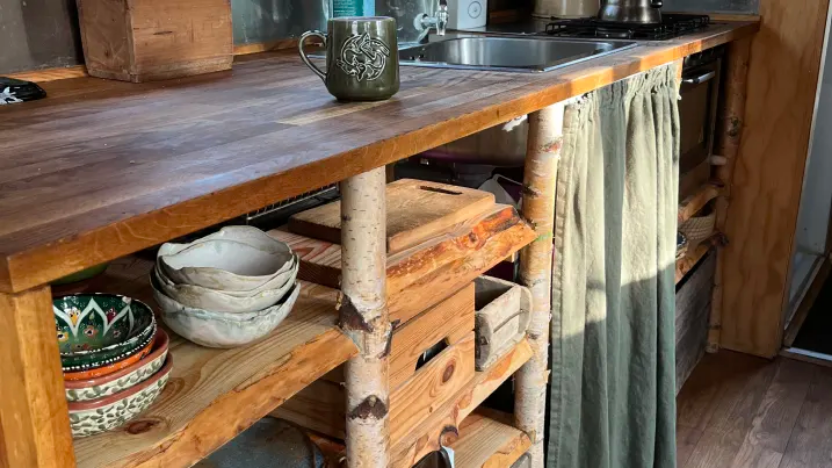 “The point of this house is to teach me how to consume less resources and that was part of the idea from the beginning,” Boisen says. “I wanted to see how low you can go in terms of still living comfortably in a tiny house. My journey is to not only make the tiny home livable but also adjust my need for resources and my behavior. The house nudges my behavior in a way.”
“The point of this house is to teach me how to consume less resources and that was part of the idea from the beginning,” Boisen says. “I wanted to see how low you can go in terms of still living comfortably in a tiny house. My journey is to not only make the tiny home livable but also adjust my need for resources and my behavior. The house nudges my behavior in a way.”
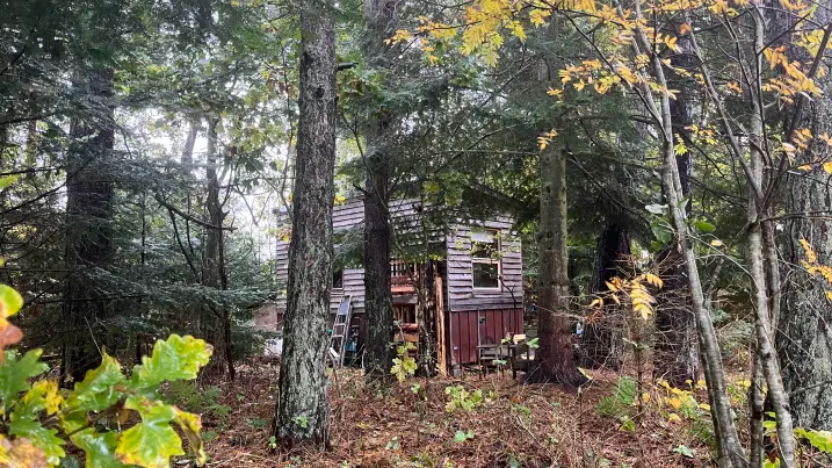 Boisen also has a permaculture garden where he’s growing potatoes, several berries, apples, leeks, cabbage, and different kinds of herbs. “I try to plant permanent plants that will give me a yield for the greatest amount of time,” he says. “I will be expanding my entire food production because right now it’s only on an experiment level, but from next season, I will expand the size of the garden considerably.” Boisen uses his food scraps to feed his chickens and composts it to use for the soil in his garden.
Boisen also has a permaculture garden where he’s growing potatoes, several berries, apples, leeks, cabbage, and different kinds of herbs. “I try to plant permanent plants that will give me a yield for the greatest amount of time,” he says. “I will be expanding my entire food production because right now it’s only on an experiment level, but from next season, I will expand the size of the garden considerably.” Boisen uses his food scraps to feed his chickens and composts it to use for the soil in his garden.
 Since finishing up the initial work on the tiny home, Boisen has added a mud room and upgraded the water filtration system. He’s getting ready to build a new house and sell this one. Boisen says the plan is to build a tiny home that is more practical for having a family and continuing a self-sufficient lifestyle: “I’m in a way, preparing for the future.”
Since finishing up the initial work on the tiny home, Boisen has added a mud room and upgraded the water filtration system. He’s getting ready to build a new house and sell this one. Boisen says the plan is to build a tiny home that is more practical for having a family and continuing a self-sufficient lifestyle: “I’m in a way, preparing for the future.”
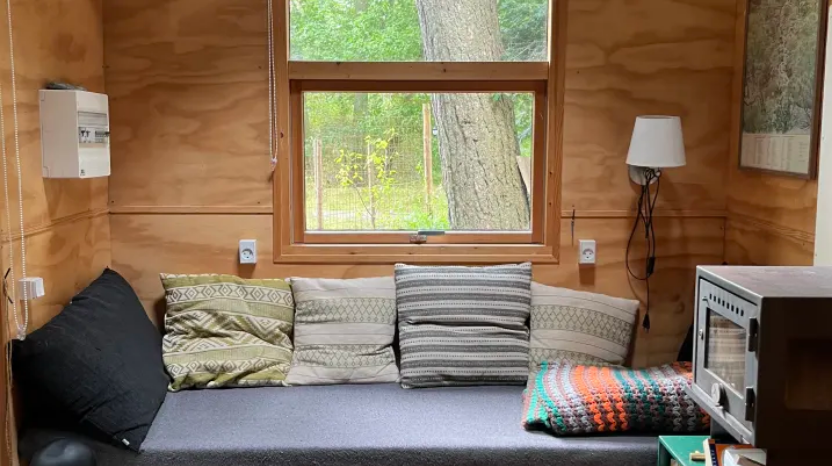 You can read the original article at www.cnbc.com
You can read the original article at www.cnbc.com

